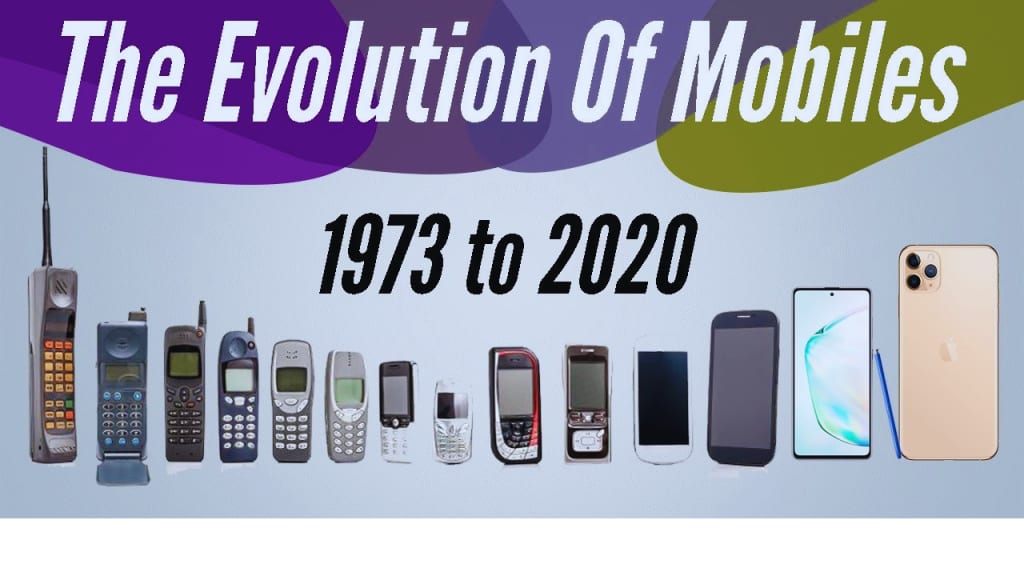
The evolution of mobile phones can be traced back to the mid-20th century when the first mobile phones were introduced. These phones were large and bulky, and were primarily used by government agencies and the military. Over time, the size of the phones decreased, and they became more accessible to the general public.
In the 1980s, the first commercially available mobile phones were introduced, which were still large and expensive. However, these phones paved the way for the development of smaller and more affordable phones in the 1990s. This decade saw the rise of flip phones and the introduction of features such as SMS messaging and caller ID.
The early 2000s saw the introduction of smartphones, which were phones that had advanced computing capabilities and could connect to the internet. These phones had touch screens and could run apps, making them more versatile than previous models. The launch of the iPhone in 2007 revolutionized the smartphone industry and spurred the development of new features such as virtual assistants and facial recognition.
Today, smartphones continue to evolve with the introduction of 5G technology, foldable screens, and advanced cameras. Additionally, mobile devices have become more integrated into daily life, with many people using their phones to access social media, online shopping, and other services.
The evolution of mobile technology has been a remarkable journey since the first mobile phone call was made in 1973. Over the years, mobile devices have undergone significant transformations in design, size, and features, and have become an integral part of our daily lives.
Here are some key milestones in the evolution of mobile technology:
First-generation mobile phones (1G):
These phones were introduced in the 1980s and used analog technology. They were large, heavy, and expensive, and could only make voice calls.
Second-generation mobile phones (2G):
The introduction of digital technology in the 1990s marked the era of 2G phones. These phones could send and receive text messages, and some models had basic internet connectivity.
Third-generation mobile phones (3G):
3G phones arrived in the early 2000s and were the first to support high-speed internet access, video calls, and multimedia messaging.
Fourth-generation mobile phones (4G):
4G technology offered faster download and upload speeds, improved call quality, and better coverage.
Fifth-generation mobile phones (5G):
5G technology was introduced in the 2010s and offers even faster download and upload speeds, reduced latency, and the ability to connect a large number of devices simultaneously.
In addition to these advancements in technology, mobile devices have also evolved in design, with the introduction of touchscreens, foldable screens, and various sizes and shapes.
Today, mobile devices are not just limited to making calls and sending messages. They have become an all-in-one tool for communication, entertainment, productivity, and much more. From smartphones and tablets to smartwatches and other wearables, mobile technology has truly transformed the way we live, work, and communicate.
The evolution of mobile technology has been an ongoing process that has spanned several decades, with significant advancements being made in the last two decades. Here is a brief overview of the key milestones in the evolution of mobile technology:
First Generation (1G) (1980s): The first mobile phones were bulky and expensive, and they could only make and receive calls. The 1G network was analog and had limited coverage.
Second Generation (2G) (1990s): 2G technology introduced digital cellular networks that improved call quality and added basic messaging capabilities such as SMS. The introduction of SIM cards also allowed users to switch between phones easily.
Third Generation (3G) (Early 2000s): 3G technology brought faster data transfer speeds and allowed for more advanced applications such as video calling and mobile internet browsing.
Fourth Generation (4G) (Late 2000s): 4G technology was a significant improvement over 3G, offering even faster data transfer speeds and enabling the widespread use of streaming services such as Netflix and YouTube.
Fifth Generation (5G) (2019-2020): 5G technology is the latest and most advanced iteration of mobile technology. It offers even faster speeds, lower latency, and the ability to connect more devices simultaneously. 5G is expected to enable new technologies such as autonomous vehicles, remote surgery, and advanced augmented reality.
Along with these technological advancements, there have been significant changes in the form factor of mobile devices. From the bulky, brick-like devices of the past to the sleek and slim smartphones of today, mobile technology has come a long way. Additionally, advancements in battery technology have enabled devices to last longer on a single charge.
Overall, the evolution of mobile technology has revolutionized the way we communicate, work, and live. It has enabled us to stay connected with each other and access information from anywhere at any time, and it is likely to continue to shape the future of technology and society.
Was this response better or worse?
Better
Worse
Same





Comments
There are no comments for this story
Be the first to respond and start the conversation.